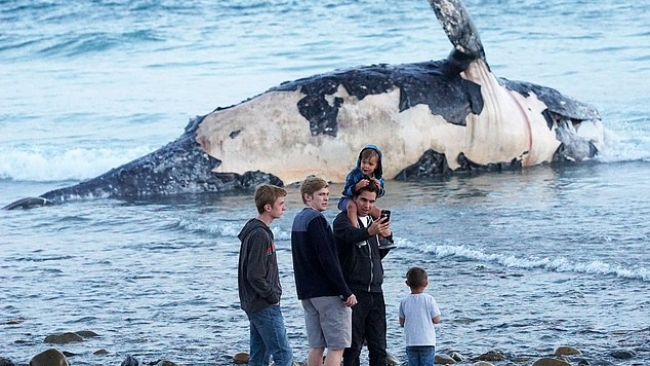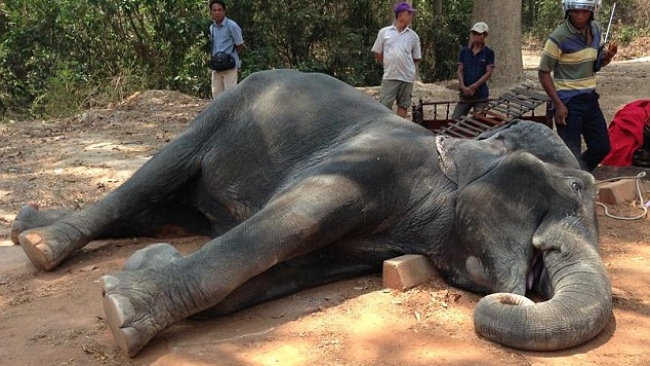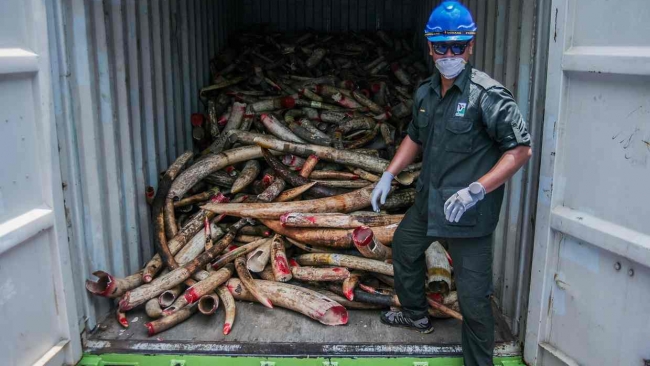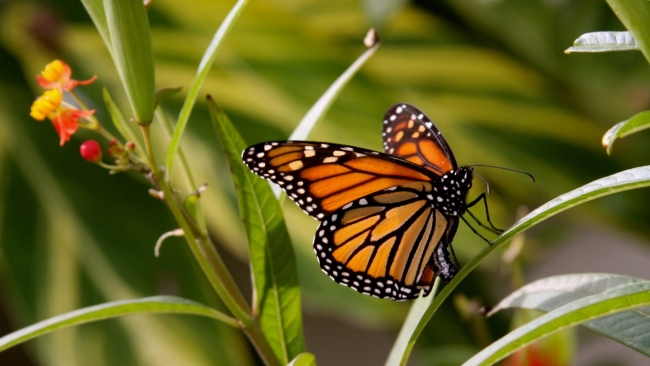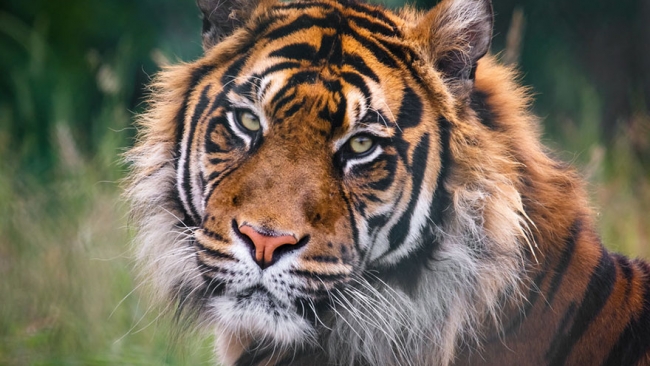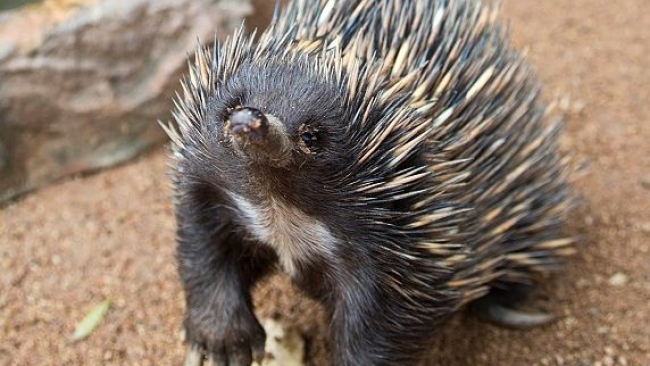How torching £150 million of ivory could help save the elephant
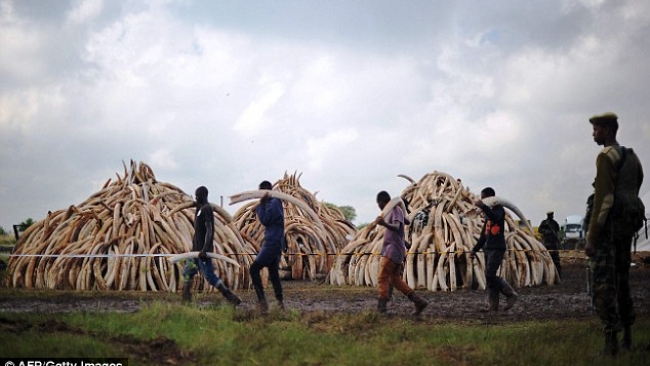
As world leaders declare war on poachers and light an extraordinary bonfire... From a distance, it looks as if someone is building a chi-chi new safari development on the edge of Nairobi. But as you get closer, you realise that these elegant constructions are not made of traditional wood, grass and mud. They are huge piles of ivory — 105 tons of the stuff, to be precise. And the really sobering statistic is that more than 20,000 elephants were killed to produce this lot. Yet tomorrow afternoon the entire haul, worth up to £150 million on the black market, will be put to the torch, with heads of state and some of the world’s leading conservationists looking on. I hope they are standing upwind of all the smoke. Because this will be the biggest ivory bonfire in history. It is designed to send a dramatic and uncompromising warning to the poachers and crime syndicates who are threatening to wipe out the mightiest creature on earth: we are coming to get you. That, at least, is the intention. For now, the ivory hunters show no sign of abandoning their slaughter of Africa’s dwindling elephant population to feed a seemingly relentless Asian appetite for ivory ornaments. The tusk inferno will mark the grand finale of a summit in Kenya which could determine whether the African elephant has a future or is condemned to join the growing number of species headed for extinction. Because if poaching continues at its current level, there may be no African elephants left in the wild in a decade or two. The stakes really are that high. Hence the importance of this summit. It is being watched from afar by the British Government and also by the Prince of Wales and his sons, who have had a hand in its creation. For this is the inaugural meeting of the Giants Club, a new association of African nations which are home to the elephant, plus leading players in the wildlife game. And it is no mere talking shop. Club rules are strict. Member states have to agree to meet specific conservation demands and funding objectives. And it must be the head of state who signs on the dotted line, ensuring that lines of communication go to the very top. Many countries, including South Africa and Zimbabwe, have yet to join. But this morning presidential delegations from four countries, representing more than half of the remaining 400,000 elephants in Africa, will be present. The leaders of Botswana, Gabon and Uganda will join their host, Kenya’s President Uhuru Kenyatta, in the town of Nanyuki. There, too, will be leaders of the world’s main conservation organisations and senior global emissaries, including America’s Deputy Secretary of State, brandishing a message of support from Barack Obama. ‘There has never been this level of engagement on this issue before. We are expecting real outcomes,’ says Dr Max Graham, 38, Cambridge zoologist and founder of the elephant charity Space for Giants. He had the idea for the new club, along with its patron, the London-based media owner and philanthropist, Evgeny Lebedev. He points to the fact that 100,000 elephants were killed by poachers between 2010 and 2012, and that the death rate is continuing at 30,000 per year. That spells extinction. The situation is critical for forest elephants, a sub-species particularly vulnerable to the poaching gangs, who hide from security forces beneath the forest canopy. In parts of Cameroon and the Democratic Republic of the Congo, the entire forest elephant population has already been wiped out. All over Africa, an increasingly bloody battle is being fought between the wildlife authorities and well-armed poaching gangs, assisted by networks of corrupt public officials. And the illegal trade is hitting not just animals but entire ecosystems. Take the elephant out of the equation in savannahs and forests where it has roamed since time immemorial, and the natural order of things collapses. So what is driving demand? It’s not as if we need ivory to make piano keys, dominoes and knife handles any more. And the Convention on International Trade in Endangered Species (CITES) has banned all trade in tusks. The heart of the problem is that ivory is an aspirational commodity in large parts of Asia, a symbol of wealth and success. And with the expansion of the upwardly mobile middle classes in China, Vietnam and elsewhere has come increased demand for ivory figures and carvings. Just as a Westerner might hanker for a Jacuzzi or conservatory, they dream of an ivory statuette on the mantelpiece. It is, of course, illegal to import or export ivory any more. But historic supplies of ivory legally acquired in the past help provide unscrupulous Asian dealers with a good cover story when the authorities come knocking. What is beyond question is that poached ivory is being smuggled by the ton out of African ports such as Mombasa and Zanzibar. It is usually concealed in containers full of ordinary goods or crops, and signed off by pliant customs officials in the pay of the crime syndicates. The current black market rate at the far end is said to be up to £1,400 a kilo. Several middlemen take a cut at every stage, from the corpse in the bush to the backstreets of Beijing. It is also Asian demand for the body parts of other endangered species such as the rhino and tiger — which are perceived to have magical medicinal qualities — that is driving those creatures to the brink of extinction, too. With that in mind, our Government convened a summit of almost 50 countries in London in 2014 to agree fresh strategies to fight a trade that is now worth a staggering £13 billion each year. The Prince of Wales, the Duke of Cambridge — a hands-on patron of the charity Tusk — and Prince Harry were among the speakers. Among the central figures at this week’s summit is Ian Craig, owner of the nearby Lewa Conservancy, the 55,000-acre Kenyan wildlife ranch where a young Prince William worked in his student days. It was there that the Prince proposed to Catherine Middleton in 2010 — and he was back there last month for the wedding of Mr Craig’s daughter Jessica, a former girlfriend. It was also in Kenya that the world’s first ivory-burning took place in 1989, when 12 tons were torched. Since then there have been occasional destruction ceremonies around the world, but never anything on the scale of tomorrow’s blaze outside Nairobi. ‘It’s going to be very symbolic,’ says Mr Lebedev. ‘And it is saying, very clearly, that an elephant is worth more to us alive than dead.’
Source: Daily Mail
Fri 29 Apr 2016 at 07:22
